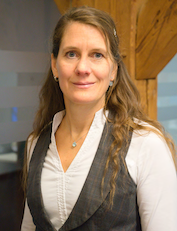biomechanics
projects:
Funding source: BMBF / Verbundprojekt
Project leader:
Prof. Dr.-Ing. habil. Sigrid Leyendecker
head of institute
Das Verbundprojekt DYMARA hat die Entwicklung eines innovativen digitalen Menschmodells (Manikins) mit detaillierter Modellierung der Skelettmuskulatur und schnellen numerischen Algorithmen zum Ziel. Mit diesem Manikin soll es möglich werden, den Menschen simulationsgestützt auf optimale Weise in sein Arbeitsumfeld zu integrieren und Ermüdungen, Erkrankungen sowie Unfälle am Arbeitsplatz zu vermeiden. Neben diesen ergonomischen Gesichtspunkten soll das Menschmodell auch zur Therapieplanung im m…
Funding source: Bayerisches Staatsministerium für Umwelt und Verbraucherschutz (StMUV) (ab 10/2013), Bayerisches Staatsministerium für Umwelt und Gesundheit (StMUG) (bis 09/2013)
Project leader: ,
Prof. Dr.-Ing. habil. Sigrid Leyendecker
head of institute
Within the framework of the research work of the Bayerische Bionikzentrum, the project requested for this project aims to develop and operate energy-saving actuators modeled on natural muscle tissue and used in kinematics with multiple degrees of freedom. The focus should be on the functional principle of Dielectric Elastomer Actuators (DEA) for the construction of individual muscle cells and their linking to artificial muscles. In order to achieve the goal of an energy-efficient and energy-storing as well as flexible and highly dynamic actuator system, methods for producing the muscle stacks, microcontroller circuits for actuating the actuators, measuring principles and methods for determining joint positions, and finally simulation and control models for these actuators and kinematics must be developed become. In the long term, the described research will form the basis for a new generation of robotic solutions with a broad application spectrum from intrinsically safe service robots to highly dynamic mobile kinematics to bionic prostheses. In addition, the technology to be developed opens up the possibility of reproducing the most diverse forms of movement and physiological processes of living beings through the use of complexly distributed microactuators. Thus, the transfer of principle mechanisms to technical problem solutions from a wide range of different life forms can be realized.
Funding source: DFG-Einzelförderung / Emmy-Noether-Programm (EIN-ENP)
Project leader:
Prof. Dr.-Ing. habil. Sigrid Leyendecker
head of institute
Simulation is of great importance when studying everyday or athletic motions with regard to improvements in ergonomics and performance. In particular for medical problems like analysing gait or optimising prostheses as well as for planning robot manoeuvres, simulation is often the only way to estimate the actuating and applied forces and torques. An approximate solution can only be as accurate as the underlying numerical method represents the system’s characteristic properties. If, for example, t…
Project leader:
Prof. Dr.-Ing. habil. Sigrid Leyendecker
head of institute
Project leader:
Prof. Dr.-Ing. habil. Sigrid Leyendecker
head of institute
Proteins are dynamic macromolecules that perform their biological functions by exchanging between different conformational substates on a broad range of spatial and temporal scales. As the underlying energy landscapes that govern these conformational changes are very rough and often contain high energy barriers, efficient, yet atomically detailed simulations to understand and predict biophysically relevant motions remain challenging.This project aims at providing functional insights into protein…
Funding source: DFG / Schwerpunktprogramm (SPP)
Project leader:
Prof. Dr.-Ing. habil. Sigrid Leyendecker
head of institute
The overarching goal of this project (phases I and II) is the development of models and structure preserving solution methods for biomechanical optimal control problems involving uncertainty to enable the reliable prediction of human motion with prostheses and their analysis. To be able to get close to the consideration of a real world scenario when simulating the uncertain motion with prosthesis, we want to exemplarily focus on one particular foot prosthesis and perform measurements. We will experimentally…
Funding source: Stiftungen
Project leader:
Prof. Dr.-Ing. habil. Sigrid Leyendecker
head of institute
This projectcontains the establishment of a heart support system as a contractile membrane based on the pericardium to minimize theconsequences of severe heart disease and to maintain proper cardiacfunction. The project is a research cooperation between the Institute ofApplied Dynamics and the Pediatric Cardiology at the Friedrich-Alexander-Universität Erlangen-Nürnberg and is funded by the Klaus Tschira Foundation. The project includes the study ofcardiac function under pathological and normal cond…
Funding source: Industrie
Project leader:
Prof. Dr.-Ing. habil. Sigrid Leyendecker
head of institute
The goal of this project is to apply techniques of biomechanics and optimal control to generate realistic human-like motions of the DHM from generic working instructions like for example move a box from A to B. Such a model would enable the engineers to take into account physical workloads and reachability issues in virtual assembly planning.
The digital human is modeled as a biomechanical multibody system with muscles as actuators. The motions of the DHM for specific working instructions are…
Funding source: DFG-Einzelförderung / Sachbeihilfe (EIN-SBH)
Project leader:
Prof. Dr.-Ing. habil. Sigrid Leyendecker
head of institute
Funding source: DFG / Sonderforschungsbereich (SFB)
Project leader:
Prof. Dr.-Ing. habil. Sigrid Leyendecker
head of institute
The focus of the work programme is on the best possible integration of
empathokinesthetic sensor data into biomechanical models. Specifically,
degenerative movement restrictions of the hand are recorded by EmpkinS
and reference sensor technology and the data are optimally integrated
into the mathematical formulation of the optimal control problem
depending on data type, measurement frequency and fuzziness, etc. The
aim of the project is to develop a model of the degenerative hand
movement. Objective biomarkers of healthy or impaired movement function
are identified through movement tracking and prediction.
Funding source: Deutsche Forschungsgemeinschaft (DFG)
Project leader:
Prof. Dr.-Ing. habil. Sigrid Leyendecker
head of institute
involved scientists:
publications:
For a list of publications related to biomechanics, please look here.

